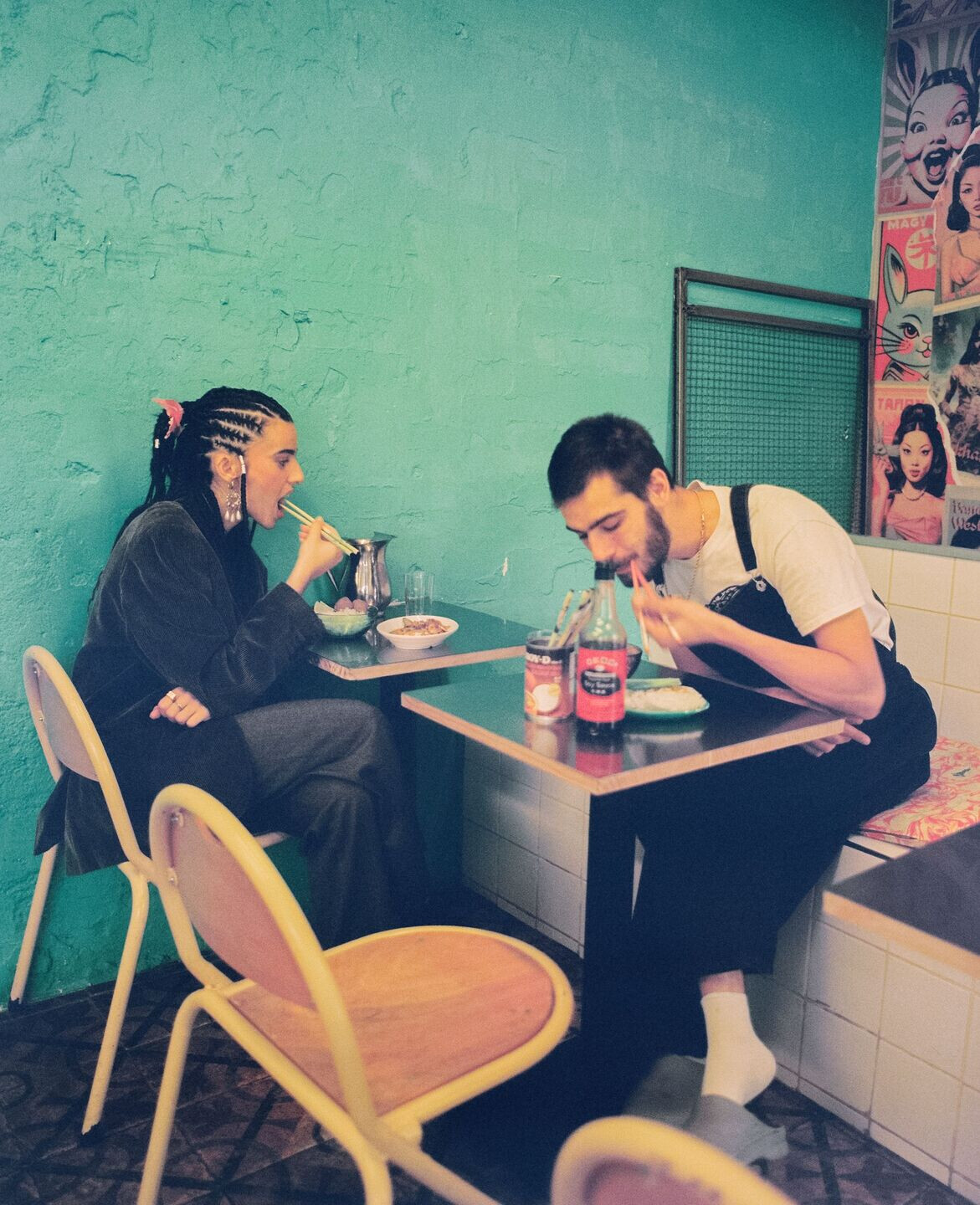TRANSFORMATION AND REINVENTION
Nowadays, bringing new objects into the world is an exercise of responsibility. With so many existing designs, is it necessary to design something new? This reflection leads me to embark on a process of transformation and reinvention. This process may involve altering the material’s structure, combining different elements, or restoring old pieces.
Through this processing, objects acquire a new identity and meaning without needing to create additional impacts on the physical environment.
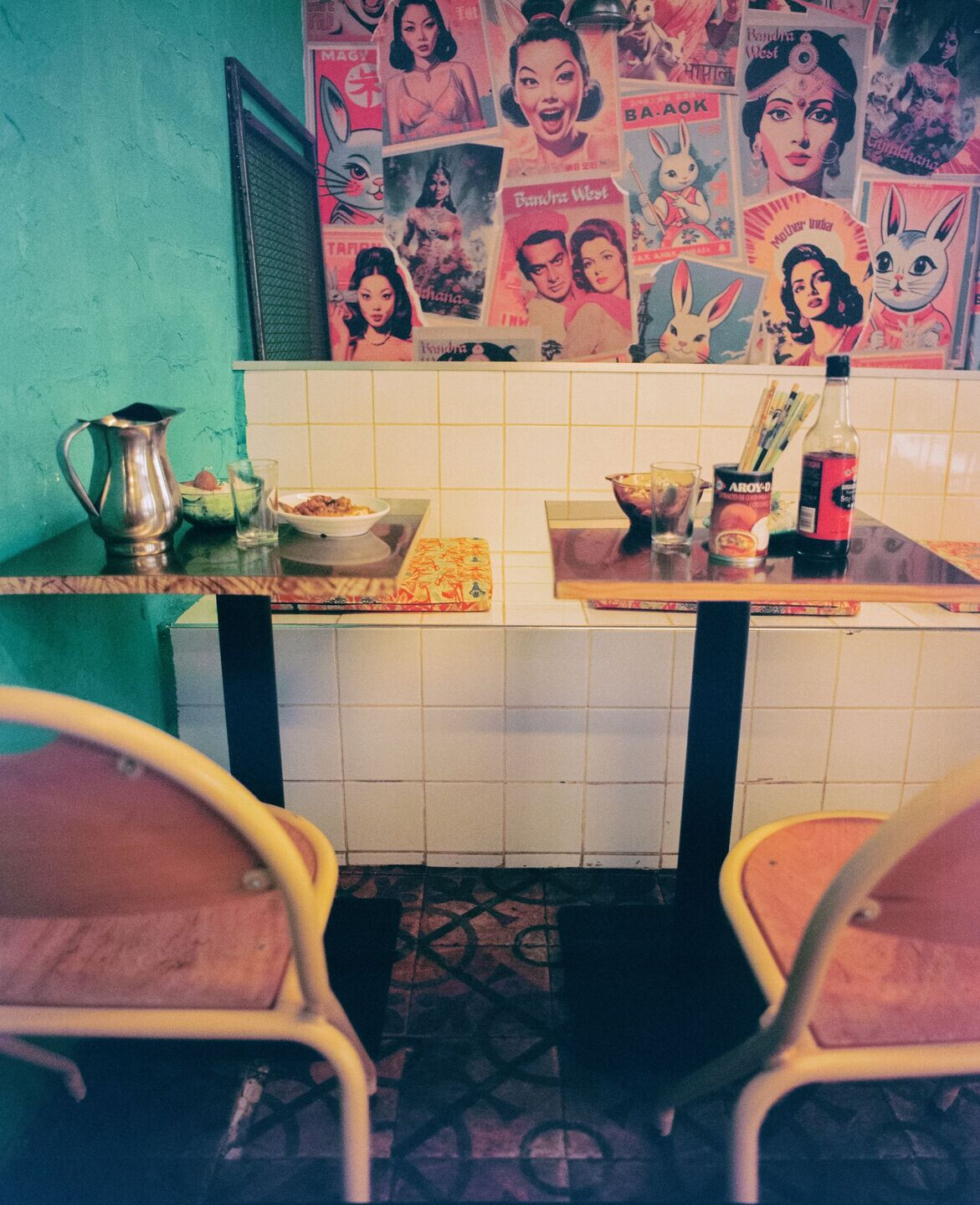
EXPERIMENTATION
My creative background began with the exploration of materials. This experimentation has led me to continually seek new ways to use traditional and unconventional materials, giving them new meanings and applications.

INTEGRATION OF TECHNOLOGY
Technology plays a crucial role in the creation of design narratives. Tools such as artificial intelligence, augmented reality, or 3D printing allow me to experiment with new possibilities. These technologies not only facilitate the realization of complex ideas but also enable interaction with objects in novel ways, expanding the boundaries of traditional design.
Through experimentation, creative transformation, and the integration of technology, I generate rich and evocative narratives that invite deep and meaningful connection.
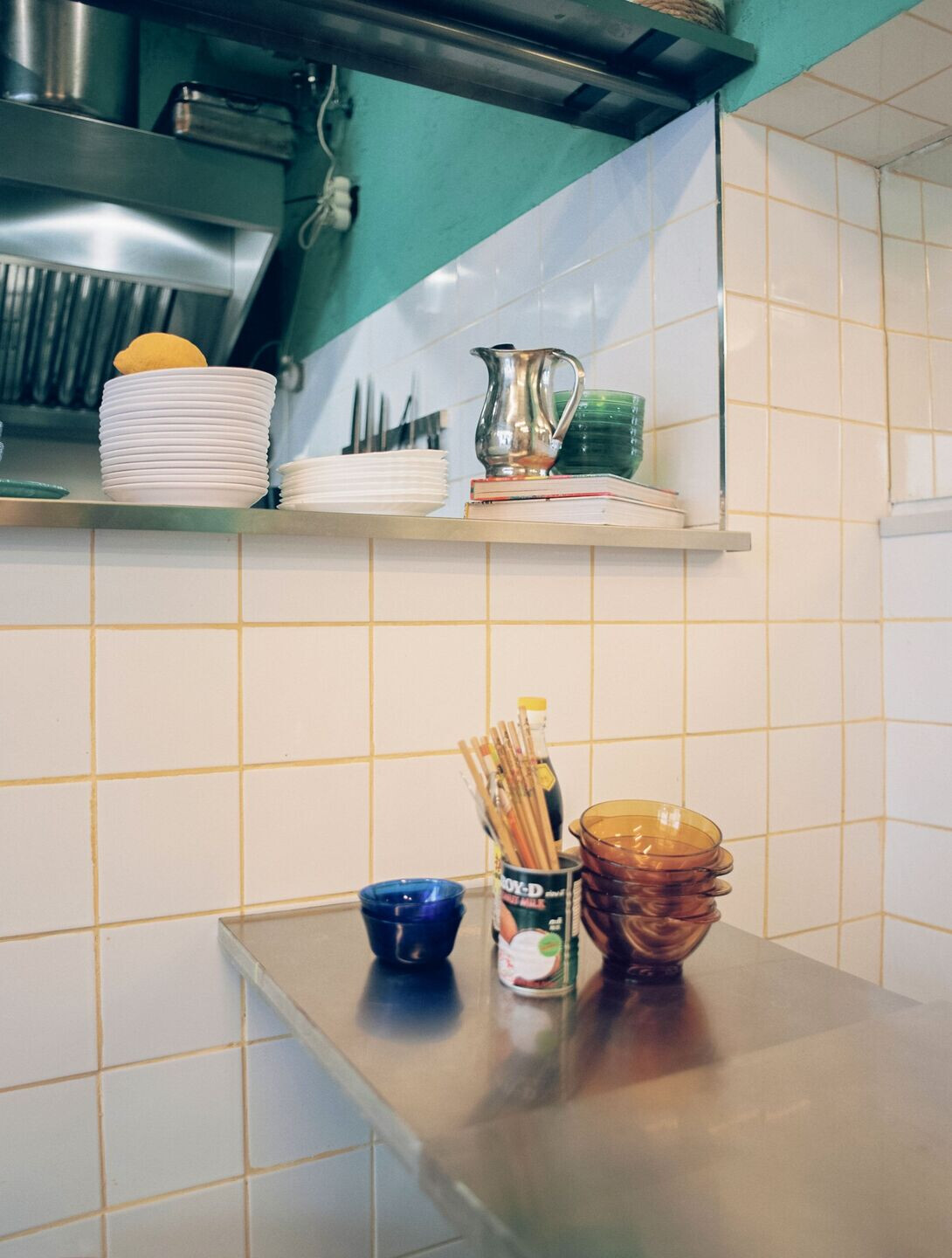
SPACE
Interior concept:
In the interior space, I have worked along three lines: the restoration of furniture, the creation of touchpoints to attract customers and enhance their experience, and finally, the creation of an imaginary world through the use of AI as a tool. These three lines converge in the creation of a reinvented Asian canteen.
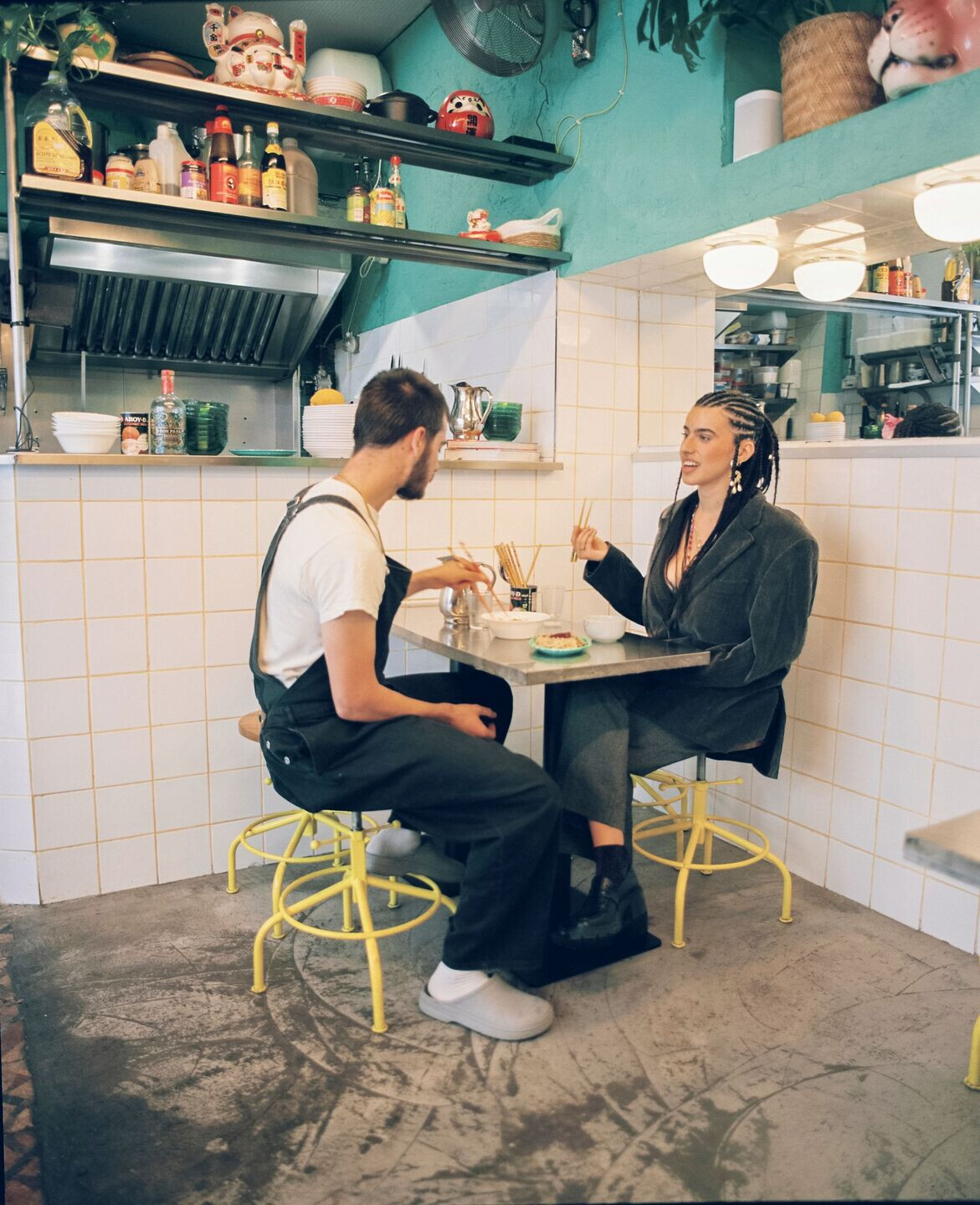
Reclaimed artifacts:
The interior of the restaurant is decorated with recycled elements, such as the old bar counter, which was reclaimed and transformed into the tables for the canteen. Second-hand pieces also play a role, ingeniously transformed to give them new life and functionality. This approach not only highlights a commitment to sustainability but also contributes a unique and authentic character to the atmosphere.
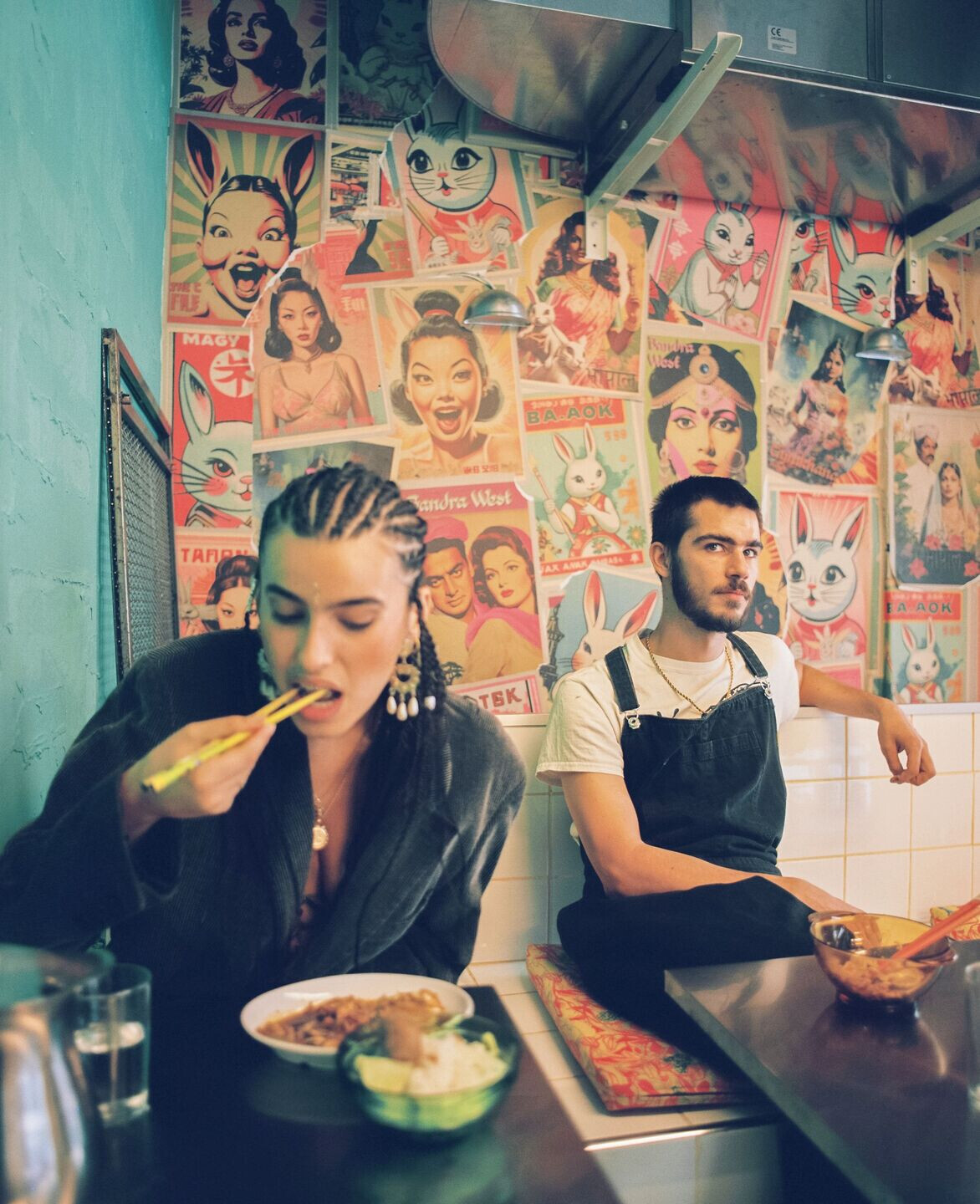
Instagram spot
In the digital age, Instagram has revolutionized the way businesses, especially restaurants, design and promote their spaces. Each place is crafted to create an aesthetic experience for the customer, from the moment they pass by on the street until they sit down to eat.
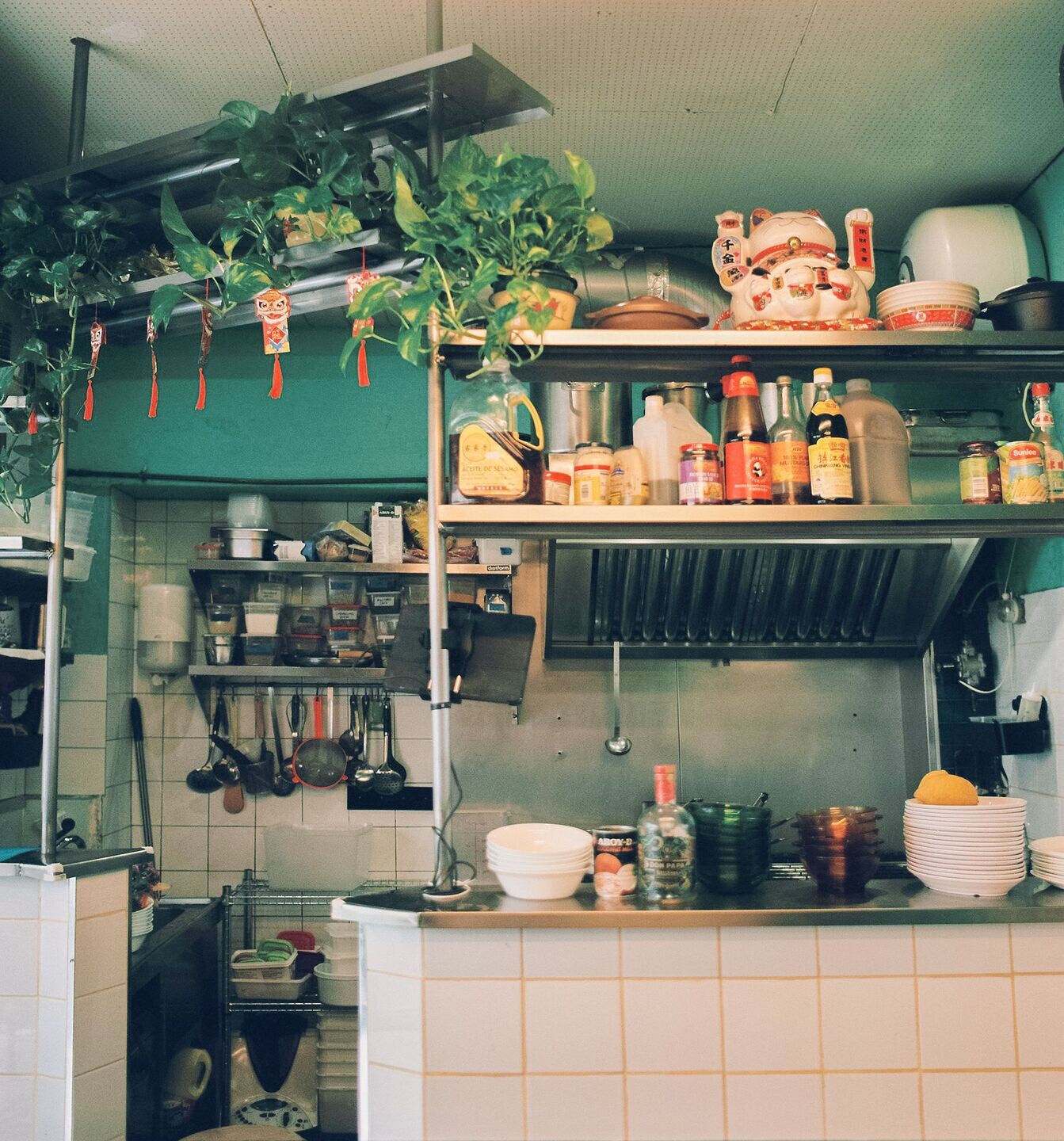
IA
How can I represent an imaginary that doesn’t belong to me? As a designer, the major challenge of this project was to reinterpret the Asian references provided by the client in a respectful and contextualized manner. Artificial intelligence has played a crucial role in this graphic development, reflecting the energy and diversity of Asian streets.
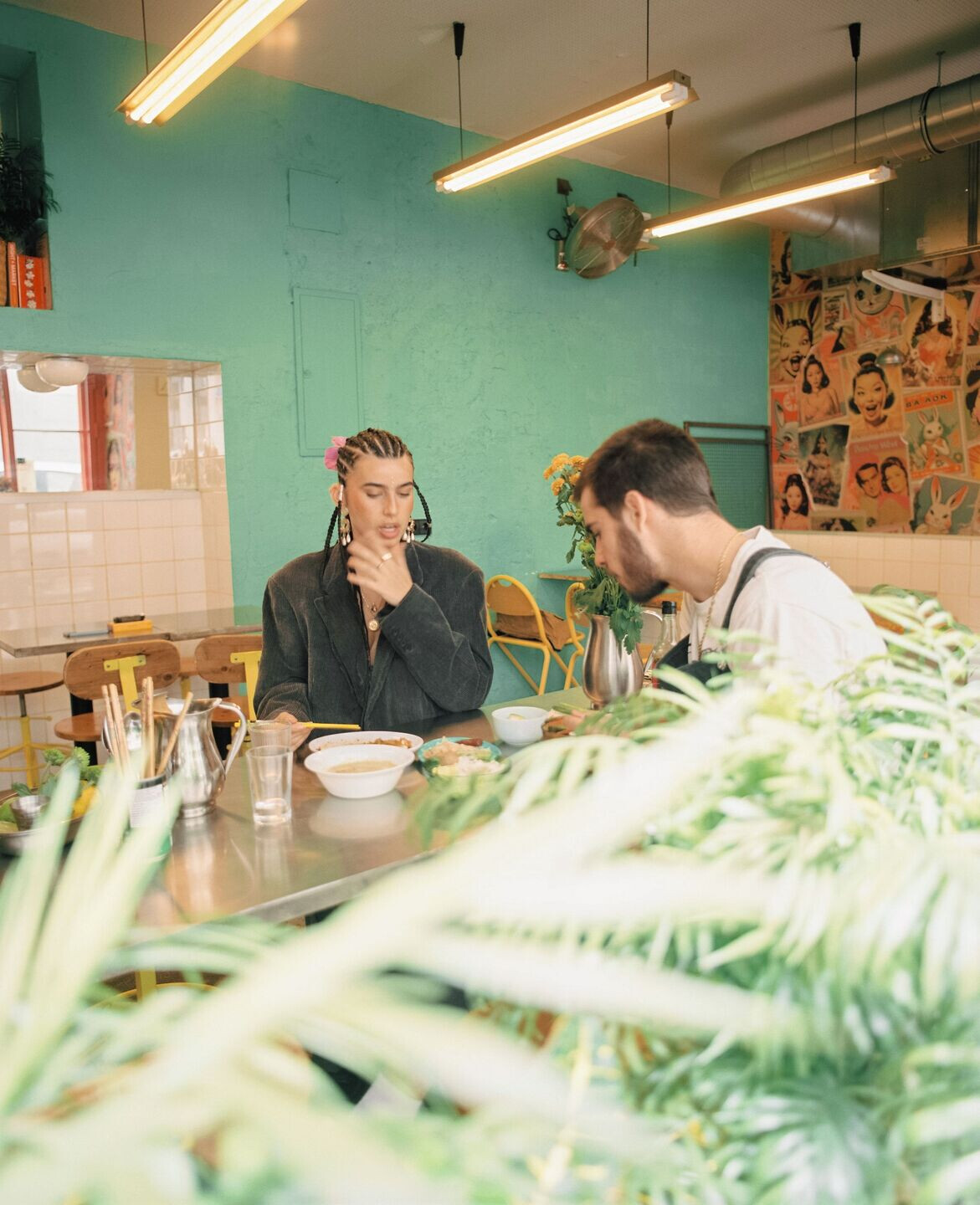
IA GENERATED
Fictional universes:
In this project, I have used artificial intelligence to create various posters for non-existent movies, inspired by the aesthetic references from the client’s childhood, along with invented elements and even personal references. These posters are used as a mural that dresses the space, transforming it into a vibrant and colorful place.
Why IA
In this project, I have used artificial intelligence to create various posters for non-existent movies, inspired by the aesthetic references from the client’s childhood, along with invented elements and even personal references. These posters are used as a mural that dresses the space, transforming it into a vibrant and colorful place.Cool prompt:
This process not only demonstrates the potential of AI but also provides a personalized and emotive experience for the client. The speed in generating images allows for the development of related universes and simultaneous work on different concepts, aiming to create new imagery where visions and aesthetic references converge.
AI is ok:
The design generated by AI is just the first step. As a designer, I must fine-tune these designs, refining and adjusting the details to ensure that the final posters strike the right balance between imagination and the use of the tool.
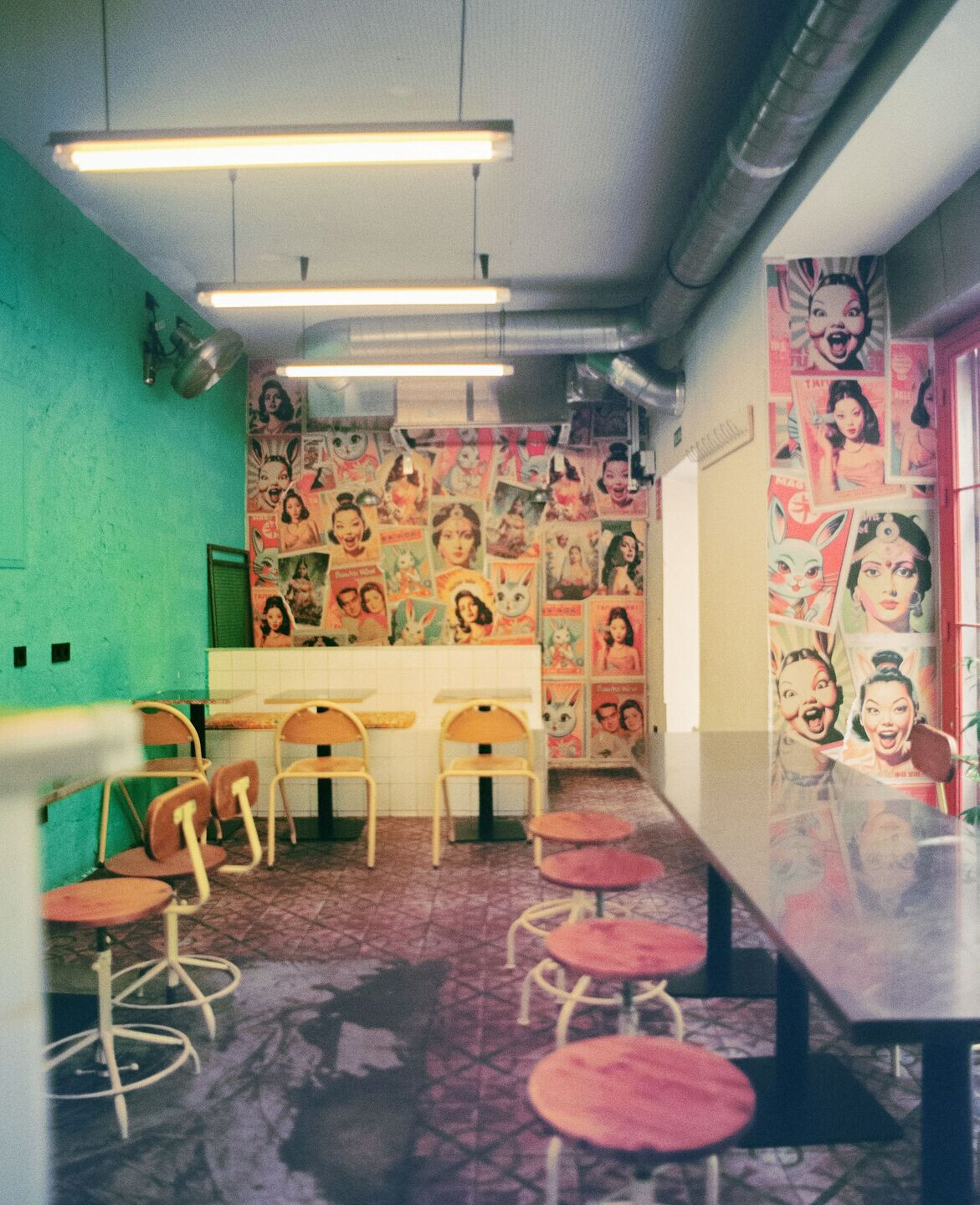
VIBES
Place to be:
Bunny Chao Asian Street Food is not just a place to eat; it is a destination where design and gastronomy come together to offer a unique experience in Madrid.
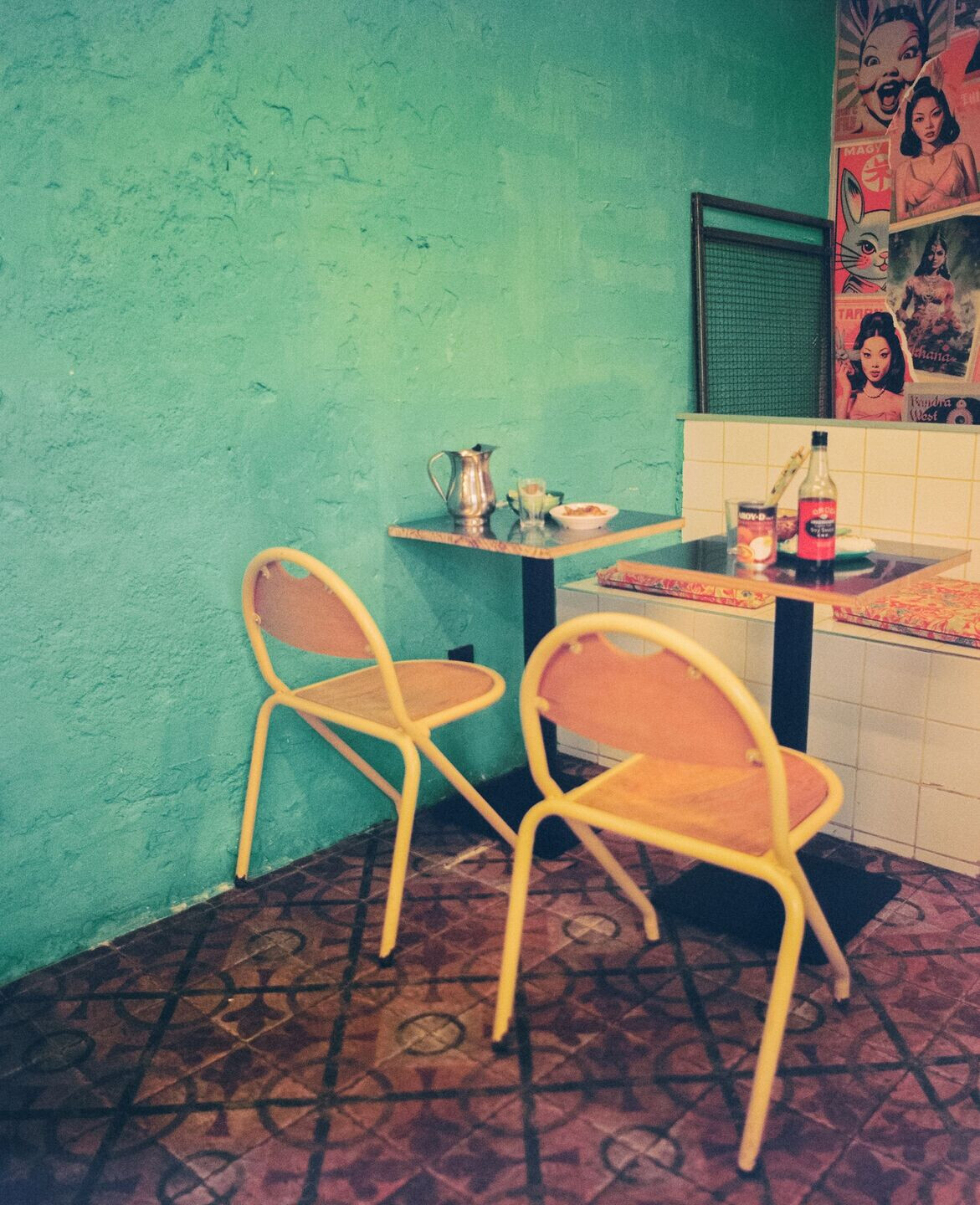
Inmotion:
Finally, the narrative of a design is completed with user interaction. People are integral to the final design, acting as moving agents that bring the space to life through their interaction with different elements, thus closing the cycle of the narrative from conception to final use. That imagined canteen only makes sense when people enjoy and experience it.
Experience:
At Bunny Chao, the space is meant to be lived, seen, and smelled. The vibrant atmosphere and innovative design blend with a menu that evolves and surprises, offering a complete experience that celebrates the richness of Asian culture and the unique cultural backgrounds of the owners, Cyntia and Imram, who are of French and Indian origin.
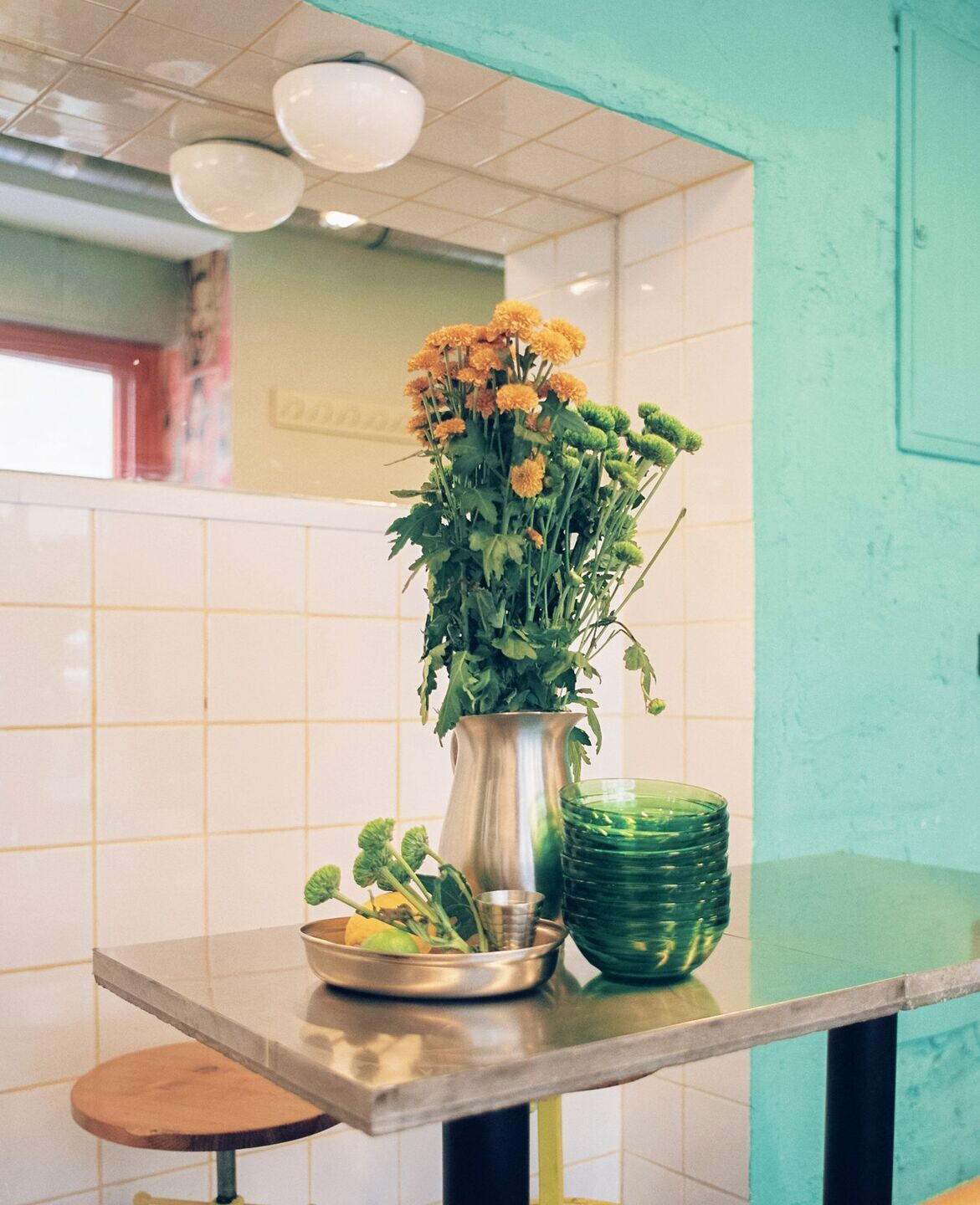
Team:
Designers: Carlota Gallo
Photographer: Anne Banaan
